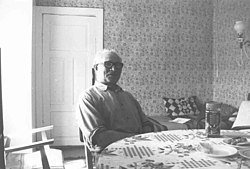This is an old revision of this page, as edited by OnWikiNo (talk | contribs) at 22:07, 20 March 2017 (Unsourced, and highly unlikely). The present address (URL) is a permanent link to this revision, which may differ significantly from the current revision.
Revision as of 22:07, 20 March 2017 by OnWikiNo (talk | contribs) (Unsourced, and highly unlikely)(diff) ← Previous revision | Latest revision (diff) | Newer revision → (diff)


Vormsi, also Vormsö (Template:Lang-sv, Template:Lang-de) is the fourth-largest island of Estonia, located between Hiiumaa and the mainland with a total area of 92 square kilometres (36 square miles). It is part of Vormsi Parish, a rural municipality.
History
Vormsi's history as an inhabited island dates back as far as the 13th century. During most of its history, the island has been inhabited by Estonian Swedes ("rannarootslased" in Estonian or "coastal Swedes" in English), whose population reached 3,000 before World War II. During the war, nearly all of Vormsi's population, along with other Swedes living in Estonia, were evacuated, or fled, to Sweden. The island's current population is approximately 240 inhabitants.
The island's Estonian name Vormsi is derived from its German name Worms or its Swedish name Ormsö. Swedish influence can also be seen in other place names, as in villages like Hullo (the administrative center), Sviby (the main port), Söderby, Norrby, Diby, Rälby, Förby, Borrby, Kärrslätt, Saxby, Busby, Suuremõisa (Magnushof, formerly Busby) and Rumpo; and lakes like Prästvik.
Economy
Vormsi is the per capita wealthiest island and region in Estonia outside of the Tallinn metro area, with incomes on the same level as inner Tallinn in Estonia. This is attributed to the fact that many wealthy people own summer homes on the island and are registered as residents, so their yearly income tax is forwarded to the island's budget.
Vormsi has no industrial activity. The island earns the majority of its revenues from taxation of mainland and overseas income of residents.
Residents
The island of Vormsi has homeowners from several countries: Estonia, Sweden, Finland, Switzerland
Name
Ormsö in Swedish means "Orm's Island", and can be translated also as "Snake Island".
Literature
- Kanarbik, Madis, Ormsö. De estlandssvenska böndernas kamp mot godsägarna under 1700- och 1800-talet (Tartu, 2003)
- Beyer, Jürgen, 'Whom should one thank for a narrow escape? Lessons drawn from a perilous journey from Vormsi and Noarootsi to Finland in 1796', Pro Ethnologia 17 (2004), 175-95
Gallery
-
 Vormsi harbor
Vormsi harbor
-
 Saxby lighthouse
Saxby lighthouse
-
 Paddock, Rälby
Paddock, Rälby
-
 Old windmill, Rälby
Old windmill, Rälby
-
 Woodsman's cottage, Hullo
Woodsman's cottage, Hullo
-
 Beach area in Rumpo
Beach area in Rumpo
-
 Viewing platform in Rumpo peninsula, looking towards Sviby harbor
Viewing platform in Rumpo peninsula, looking towards Sviby harbor
-
 Thatched roof house
Thatched roof house
-
 Vormsi cemetery
Vormsi cemetery
-
 The Huitberg Coral Reef
The Huitberg Coral Reef
-
 Sunset in Saxby
Sunset in Saxby
-
 Aurora Borealis in Saxby
Aurora Borealis in Saxby
-
 Windmills in Hullo, 1930s
Windmills in Hullo, 1930s
-
The President of Estonia, Toomas Hendrik Ilves in Vormsi in 2010
-
 Estonian Swedes in the 19th century
Estonian Swedes in the 19th century
-
 Fleeing the Soviet occupation to Sweden, 1944
Fleeing the Soviet occupation to Sweden, 1944
References
External links
- Vormsi vald (Vormsi municipality)
| Inhabited islands in the Baltic Sea | |
|---|---|
| Denmark | |
| Estonia | |
| Finland | |
| Germany | |
| Poland | |
| Russia | |
| Sweden | |
59°00′N 23°13′E / 59.000°N 23.217°E / 59.000; 23.217
Categories: